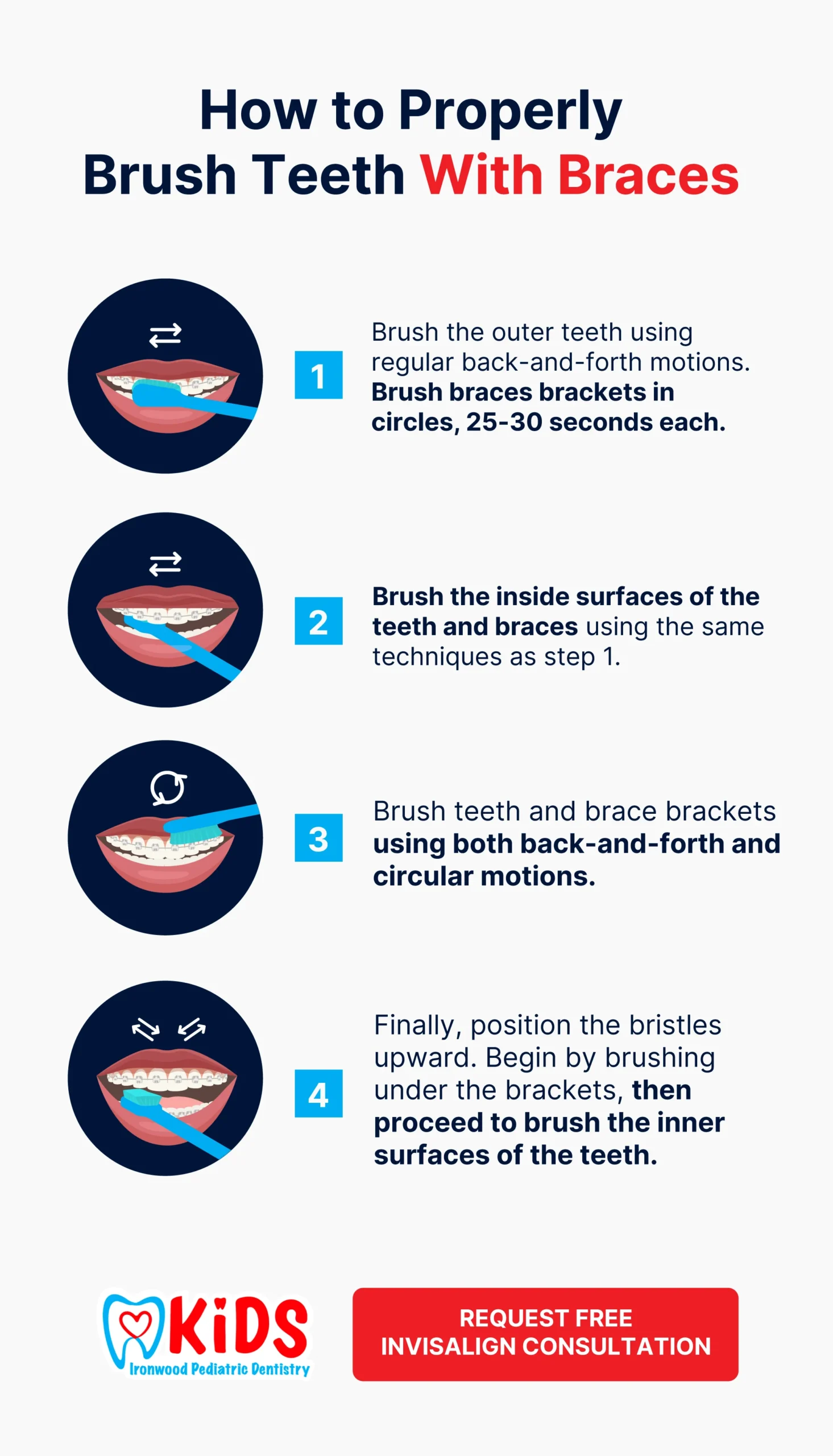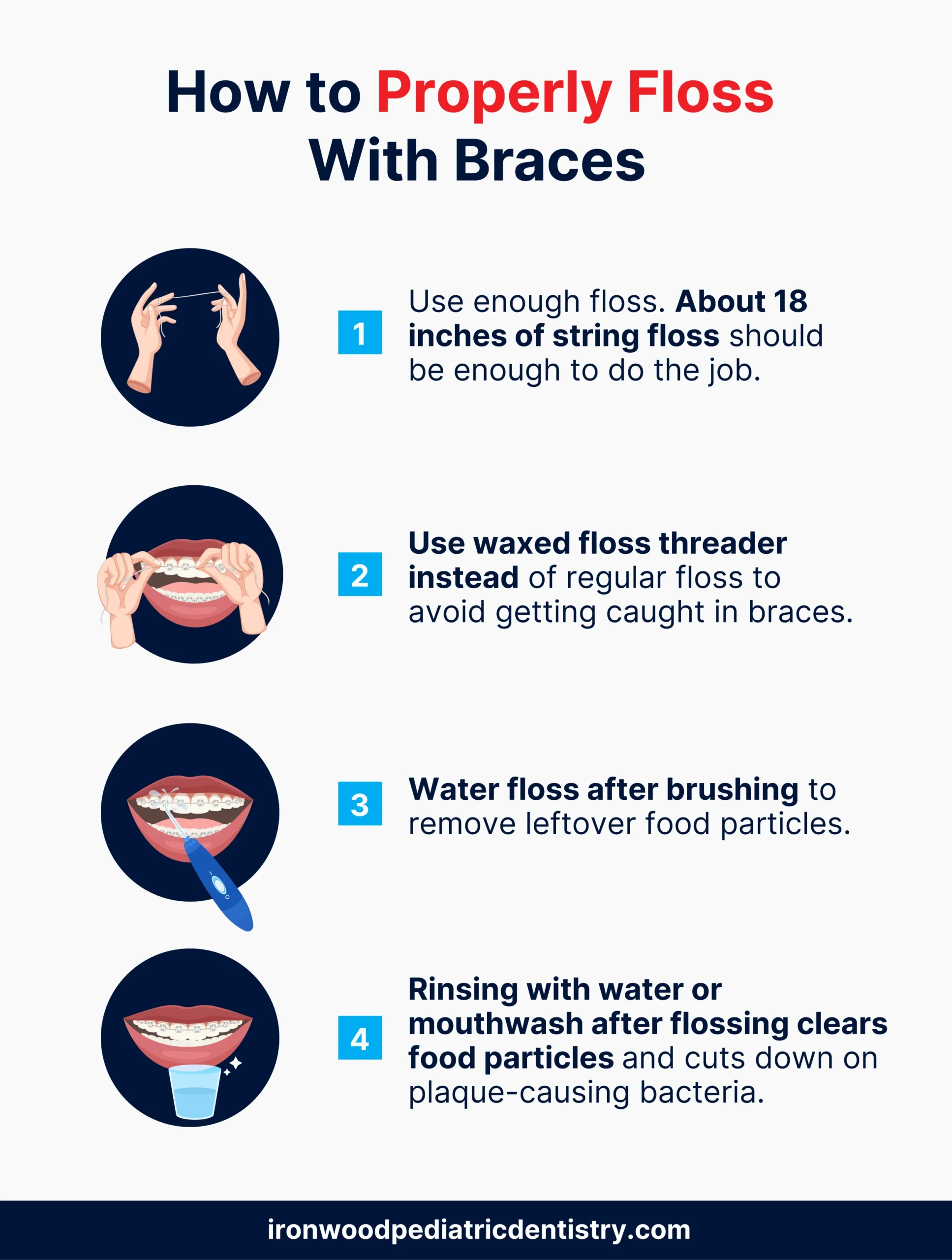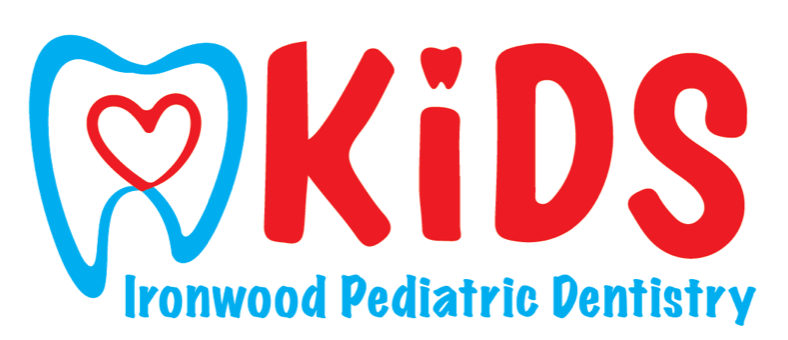Brushing your teeth when you wear braces is, basically, the same as brushing your teeth without them. The fundamentals of effective toothbrushing, like using a non-abrasive fluoride toothpaste, brushing twice a day, and using dental floss after brushing your teeth, still apply.
Of course, the presence of those brackets, wires, and elastic bands makes brushing with braces trickier than brushing your teeth alone. But don’t be discouraged! By applying the techniques and tools we discuss below, you will be able to keep your braces clean and reduce the chances of tooth decay, gum disease, and tooth stains around your braces.
As always, our children’s dental specialists at Ironwood Pediatric Dentistry are happy to answer any questions you have as you navigate the world of children’s tooth brushing. Call us at (480) 422-4544 or set up an appointment online to receive expert-level dental care and advice for your child.
Before Brushing With Braces
Your braces’ architecture naturally traps plaque and food particles. To make the job of your toothbrush easier, rinsing your mouth with water will remove food particles stuck directly in the braces. An electric water flosser device can be particularly useful at this pre-brushing stage.
How to Brush Your Teeth With Braces
Having the right tool for the job applies to brushing with braces like it does to any other task. Not all toothbrushes are the same, and some work better with orthodontic treatments like braces than others do.

Choose the Right Brush
When choosing a toothbrush to use with braces, look for the following:
- An interdental brush, which is an angled brush that lets the brush head reach crevices, clean around brackets and wires, and also reach places that can harbor plaque, promote tooth decay, and feed gingivitis.
- An electric toothbrush is acceptable for use with braces. But their bristles can tend to get caught in the braces more often than a manual toothbrush, so increased brush wear could occur.
Use the Right Brushing Technique for Braces
Brushing your teeth always involves reaching the inside, outside, and top surfaces as well as the gums. When brushing your teeth with braces, there’s one more step to this routine: the bottom of the brace brackets need to be cleaned, too.
Here is a step-by-step approach for children wearing braces to reach all the surfaces that need attention, including the gum line to prevent gum disease. Note that if you apply these steps properly, it will likely take longer to brush your teeth with braces than the minimum of two minutes that dentists recommend for children without braces.
- For the front part of your teeth, brush the area where the gums and teeth meet (above the brace on your upper jaw, and below the braces on your bottom jaw), using small circular motions, spending 25 to 30 seconds on each bracket. Position the toothbrush bristles towards the brace.
- Next, flip to the other side of the brace where it meets the edge of your teeth (the bottom part of the upper braces and the top part of the lower braces). Again, position the bristles towards the brace and use small circular motions.
- Brush the inside surfaces of the teeth (by the palate and tongue) using the same back-and-forth motion as with regular brushing.
- Brush the chewing surfaces of your teeth using the same technique as step 3.
- Lastly, rinse your mouth to remove any loose particles that might remain.
How to Properly Floss With Braces
Because of the way that brackets and wires fill in the spaces between teeth, conventional flossing with braces can be difficult and only partly effective. Here are some pointers to maximize the value you get from flossing with braces:
- Use enough floss. About 18 inches of string floss should be enough to do the job.
- Instead of using regular, unwaxed floss that can more easily get caught in the braces hardware, you can use a waxed floss threader to floss underneath the brackets. A Platypus flosser is also a great braces-friendly alternative to a floss pick.
- Using a water flosser after brushing as well as before brushing can help clean out food particles that the toothbrush might leave behind.
- Rinsing your mouth out with water or a dental rinse (mouthwash) after flossing helps dislodge any last food particles and reduce the amount of plaque-causing bacteria in the mouth.

Talk With An Ironwood Dental Professional Today About Tooth Care With Braces
If you have any questions about how to get started with the healthy habit of regular tooth brushing—or any other question about child dental health—call us at (480) 422-4544 to talk with one of our children’s dental health specialists at our Scottsdale, Arizona office. Or, if you prefer, you can set up an appointment with a dentist or an orthodontist online.
Whether to ask a question or to schedule a consultation with one of our pediatric dentists at our child-friendly dental office, we are your ally when it comes to giving your children the gift of a lifetime: lasting oral health.We can help encourage good tooth-brushing habits in your children. And if you have your kids check in with us twice a year as the American Dental Association recommends, we can spot and take care of any problems that good brushing cannot prevent, like child orthodontics.

